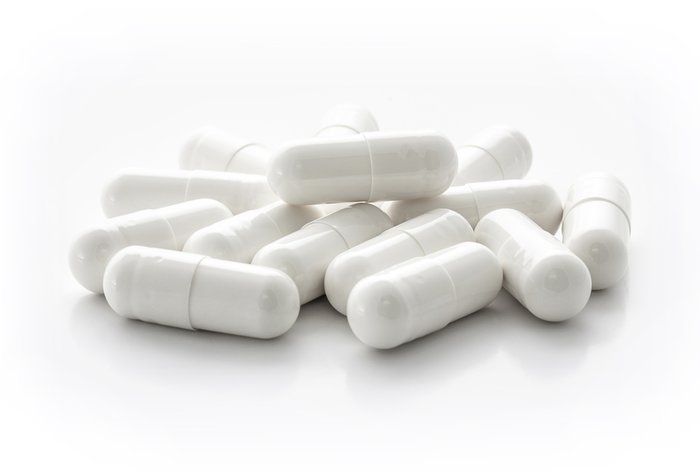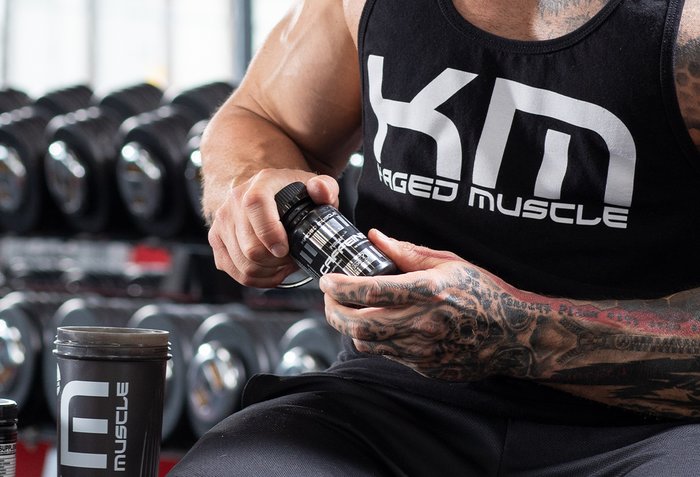03/11/2020

What Causes Fatigue During A Workout, And How To Push Past It
If you want to transform your physique, it’s crucial to push yourself during every workout. High-intensity training can help you get bigger, stronger, faster—whatever the goal.
But, when we exert ourselves with the type of intense training required to produce head-turning results, our bodies have mechanisms that trigger fatigue. Not only is it an evolutionary response to protect us from the stress of intense physical exertion, but it’s also a sign that the fuel tank is empty. While it’s natural for energy levels to drop as a workout progresses, there are key factors contributing to fatigue during a workout—and some things you can do to fight it.
Hydrogen Buildup
During a workout, the body uses different substrates as fuel. For high-intensity exercise such as a CrossFit WOD or dropsets during a bodybuilding workout, near-maximal efforts are required, and acidosis within muscle tissue is often a limiting factor. You know that feeling when you’re knee-deep in a high-rep set and it becomes difficult to crank out those last few reps because your muscles feel like they’re on fire? That burning sensation is the buildup of hydrogen and other byproducts in your muscle.

Glucose is the go-to fuel source for high-intensity training because the body can quickly break it down and convert it to adenosine triphosphate (ATP). The breakdown of glucose, a process known as glycolysis, generates compounds such as carbon dioxide and hydrogen as byproducts. As hydrogen ions accumulate, the pH levels in the body are altered, which results in a more acidic environment. The higher body pH affects overall performance by altering the muscles’ ability to contract, causing fatigue. For athletes who push their training to the limit, excessive hydrogen buildup can be one of the reasons their workouts are cut short.
Fortunately, the body has built-in systems that work to maintain balance and neutralize the acid buildup. One of these molecules is carnosine, a dipeptide made up of the amino acids histidine and beta-alanine. Carnosine helps increase the muscle’s pH by buffering hydrogen ions, allowing for better overall muscle function. Interestingly, research has shown that the concentration of histidine in the body is ample, and it’s the beta-alanine that appears to be the amino acid limiting the synthesis of carnosine.[1] Scientists have theorized that carnosine synthesis can be elevated by increasing beta-alanine consumption, and, in fact, beta-alanine supplementation has been shown to improve exercise performance lasting 60-240 seconds when a median total of 179 grams is consumed over the course of several weeks.[2]
The Fatigue Factor
Central fatigue refers to the neural-fatiguing effects of exercise that are mediated through the central nervous system (CNS). Fatigue builds up during exercise and begins to normalize post-workout. Some researchers suspect that central fatigue is a protective mechanism that the CNS uses to prevent injury, by decreasing neural drive to the muscle.
As central fatigue builds, the firing rate of muscles declines, and the rate of perceived exertion increases. Lifters can feel this effect when they’re at the end of a hard set, when each rep feels progressively more difficult, despite the barbell weighing the same throughout the set. Research has shown that “central fatigue develops more slowly during submaximal exercise than during maximal voluntary contractions.”[3] This is one reason it’s easier to do steady-state cardio for an hour than it is to sprint a 400-meter lap around the track.

As a known central nervous system stimulant, caffeine has been studied for its ability to offset central fatigue. Caffeine fires up the CNS by blocking the neurotransmitter adenosine, which can delay fatigue. Human clinical trials have demonstrated that caffeine can increase central excitability, maximal voluntary force production, and endurance.[4] The nice thing about supplementing with caffeine is that it can reach peak plasma concentrations in some individuals in as quickly as 15 minutes.[5]
